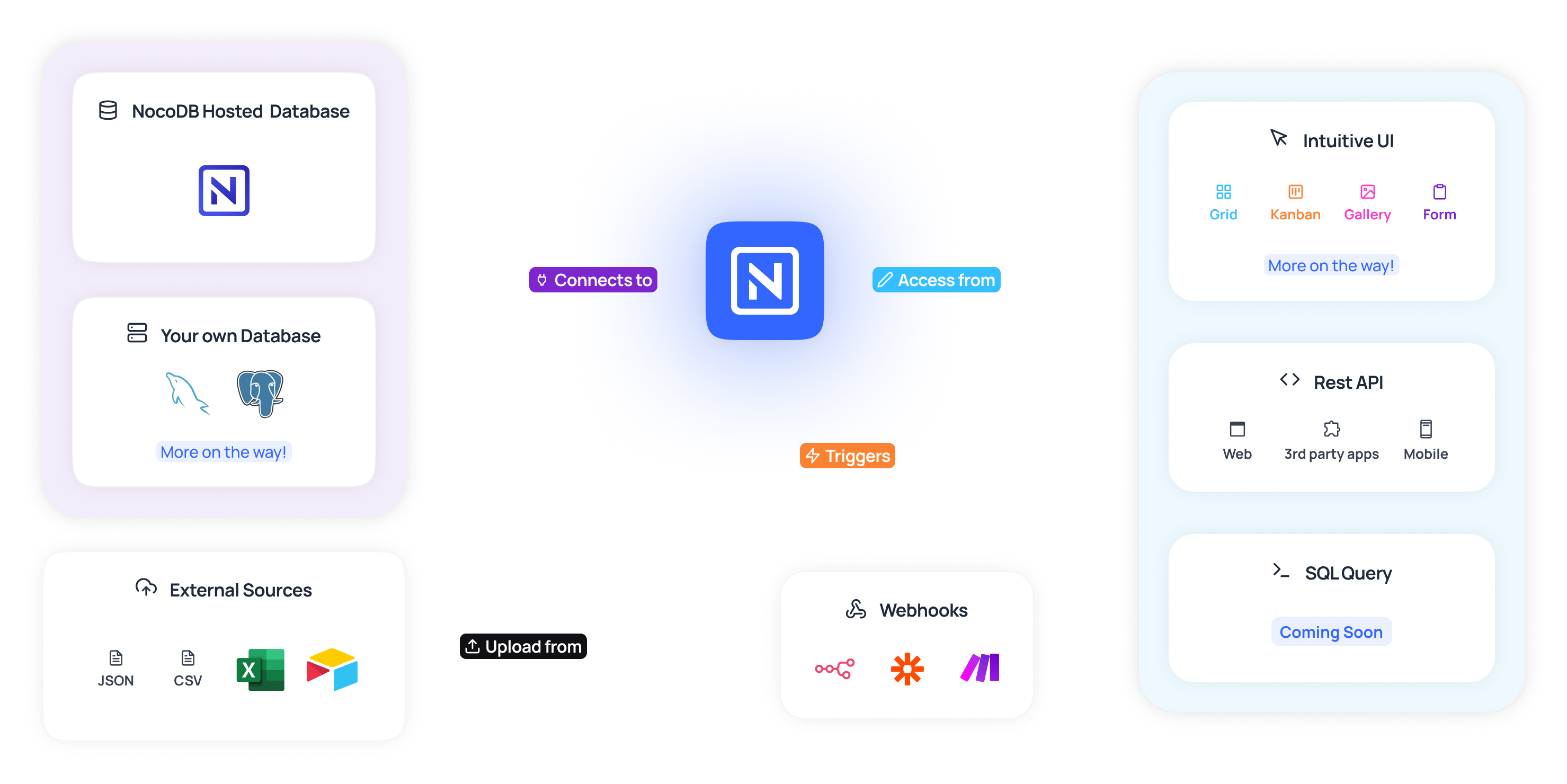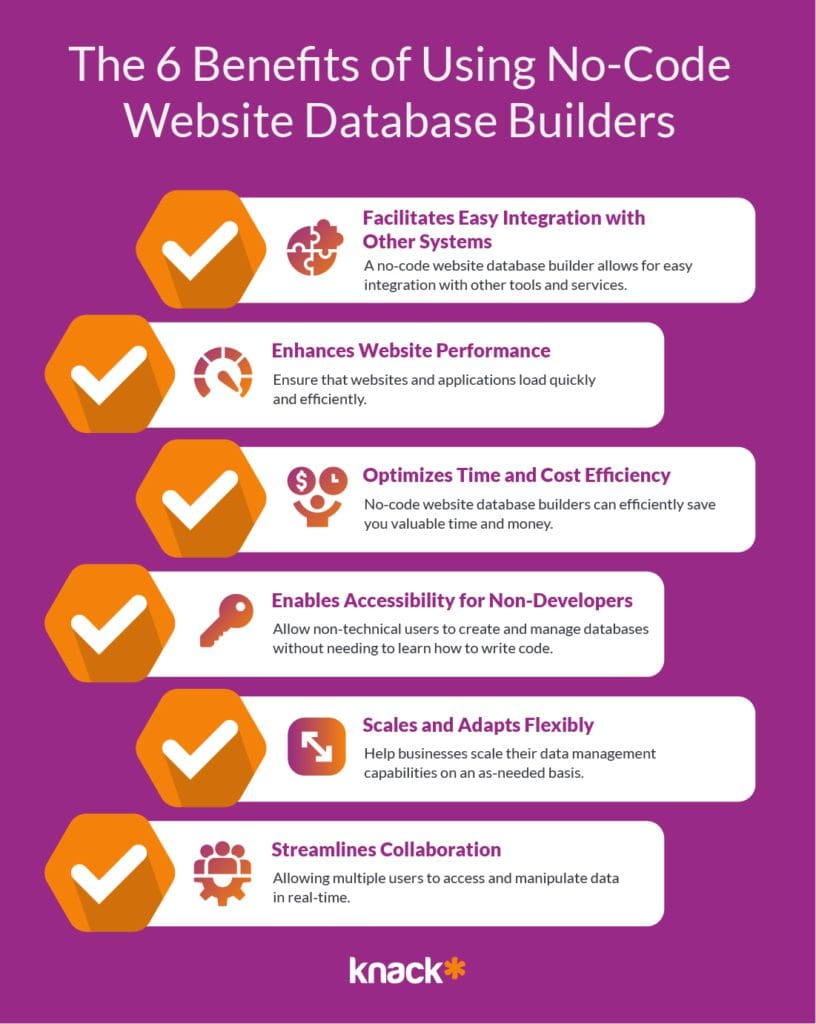Why No-Code is the Future of Open Platform Database Production for Businesses
Why No-Code is the Future of Open Platform Database Production for Businesses
Blog Article
Discovering the Benefits of Scalable Databases That Call For No Coding Abilities for Effective Data Monitoring Solutions
The appearance of scalable data sources that eliminate the necessity for coding skills provides a transformative chance for companies looking for reliable data monitoring remedies. As we consider the implications of such developments, it ends up being vital to check out just how they can improve the landscape of data management and drive sustainable growth in a competitive environment.
Enhanced Availability for Individuals
Improved availability for individuals is an essential facet of scalable databases, ensuring that information administration systems are user-friendly and easy to use. In an era where data-driven choices are extremely important, access enables a larger variety of users, consisting of those without substantial technical experience, to involve with database systems effectively. This democratization of information gain access to assists in enhanced collaboration throughout departments, empowering staff members to draw out insights and make notified decisions.
Straightforward user interfaces, such as visual information and drag-and-drop functions depiction, streamline complex data communications. These enhancements decrease the learning contour connected with typical database monitoring, allowing users to concentrate on leveraging data instead of grappling with technological intricacies. Scalable data sources typically include real-time analytics and customizable control panels, supplying individuals with immediate understandings customized to their particular needs.

Cost-Effectiveness and Source Financial Savings
Efficient data management not just pivots on access but likewise on cost-effectiveness and resource financial savings. Scalable databases developed for customers with no coding skills substantially decrease financial burdens generally connected with typical database administration systems. By getting rid of the demand for specialized programs know-how, organizations can allot their resources a lot more successfully, focusing funds on core organization activities as opposed to extensive training or employing skilled workers.
In addition, these databases commonly make use of cloud-based services, which further minimize prices related to hardware and maintenance. Organizations can scale their data source remedies according to their needs, avoiding the costs sustained from over-provisioning sources. This flexibility means services can adapt to changing demands without incurring unnecessary expenses, bring about significant long-term savings.
Additionally, user-friendly interfaces improve data entrance and administration procedures, minimizing the moment invested in management jobs. This effectiveness converts into labor cost savings, allowing teams to concentrate on tactical initiatives as opposed to routine maintenance. Overall, taking on scalable data sources that call for no coding abilities promotes a much more economical technique to information administration, allowing organizations to maximize their sources while keeping high degrees of operational performance.
Improved Cooperation Throughout Teams

In addition, scalable data sources facilitate seamless communication amongst staff member. With straightforward user interfaces that require no coding skills, staff members can quickly develop, modify, and share reports or control panels tailored to their details requirements. This democratization of data encourages non-technical customers to contribute insights, improving the collective environment.
Additionally, these databases support concurrent accessibility, permitting multiple users to visit this page work with the exact same dataset all at once. This feature improves performance, as teams can take part in joint data analysis without the threat of variation control concerns. The ability to leave comments or notes directly within the data source additionally promotes dialogue and clarifies data interpretations.
Streamlined Data Administration Processes
In today's data-driven atmosphere, organizations acknowledge the necessity of streamlined information monitoring processes to optimize efficiency and accuracy. By leveraging scalable databases that require no coding abilities, businesses can streamline their data handling and minimize the intricacies commonly associated with traditional data source systems. This ease of access equips non-technical customers to engage directly with data, assisting in quicker decision-making and reducing reliance on specialized IT employees.
Structured data management processes boost process by automating regular tasks such as data access, recognition, and coverage. Automated information integration ensures that info from numerous resources is aggregated perfectly, eliminating silos and fostering a linked view of critical organization metrics (no-code). Moreover, easy to use user interfaces enable personnel to adjust information easily, allowing them to generate insights that drive strategic campaigns without the need for considerable training.
This efficiency not just speeds up operational procedures but additionally reduces the potential for human error, making sure that information continues to be reputable and exact. Ultimately, structured data monitoring procedures through scalable databases cause improved efficiency, enabling companies to concentrate on core tasks while guaranteeing that their information administration techniques are efficient and effective.
Scalability for Expanding Companies

For expanding ventures, the capacity to scale up or down is vital. A scalable database can handle an influx of information generated internet from brand-new clients, items, or solutions, making sure that company operations remain nonstop. These databases give the capability to manage peak loads successfully, which is necessary during durations of rapid development or seasonal spikes.
Additionally, several scalable data source solutions are created with easy to use interfaces that call for no coding abilities, equipping non-technical personnel to handle data properly (no-code). This democratization of information monitoring permits companies to allocate sources purposefully and lower dependence on specialized IT employees
Ultimately, embracing a scalable data source not only enhances operational effectiveness however also cultivates an atmosphere where organizations can innovate and progress without the restrictions of traditional database pop over to this site systems. This versatility positions organizations for long-lasting success in today's affordable landscape.
Conclusion
In final thought, scalable data sources that call for no coding skills supply substantial benefits for efficient data administration. These systems boost availability for non-technical customers, reduce functional costs, and promote collaboration across teams. By simplifying information management processes and providing scalability for growing services, such remedies enable organizations to adapt to altering needs properly. Inevitably, the fostering of these user-friendly data sources cultivates innovation and positions businesses for long-term success in a dynamic setting.
Enhanced ease of access for users is a vital element of scalable databases, making certain that information administration systems are intuitive and straightforward.User-friendly user interfaces, such as drag-and-drop functions and visual information representation, streamline complex information interactions. Overall, taking on scalable databases that call for no coding skills fosters an extra cost-effective strategy to information management, making it possible for organizations to optimize their sources while maintaining high levels of functional effectiveness.
By leveraging scalable databases that need no coding skills, organizations can simplify their information handling and reduce the intricacies generally connected with traditional data source systems - no-code.Structured data management procedures enhance process by automating regular tasks such as information access, validation, and coverage
Report this page